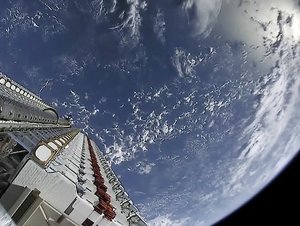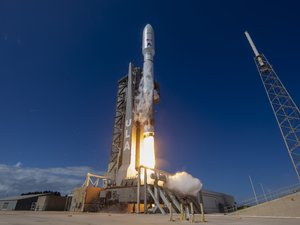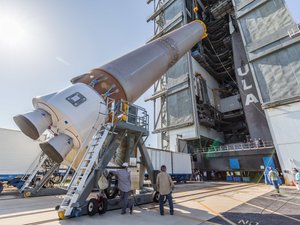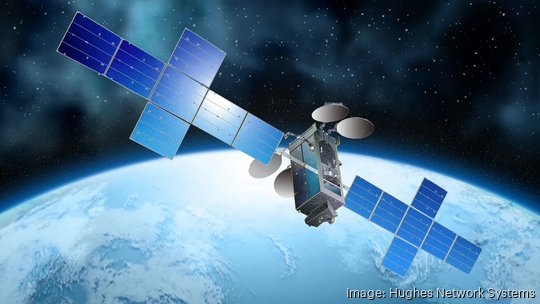
Melbourne-based L3Harris Technologies (NYSE: LHX) announced Nov. 20 that it successfully deployed giant reflectors on the Hughes Network Systems LLC's Jupiter 3 satellite that launched on a SpaceX Falcon Heavy rocket from Kennedy Space Center in July.
A successful deployment happens when the satellite controllers execute a series of maneuvers and send commands to unfurl the reflectors. From there, a series of tests are performed to ensure the reflectors are fully deployed in their intended positions, working properly and accepting signals to provide critical communication links between the satellite and ground stations.
What giant reflectors do in space
The reflectors are antennas that pack up tightly and then open once the satellite they are attached to reaches space. L3Harris has sold and delivered more than 100 of these types of antennas designed to maximize frequency reuse. Frequency reuse is a method of using the same frequency multiple times in a network. By reusing the same frequency in different areas, satellite network operators can increase the capacity of their networks without having to add additional satellites or frequency bands.
Germantown, Maryland-based Hughes Network Systems operates HughesNet, which provides satellite internet for residential and commercial use. The Jupiter 3, billed as the world’s largest communications satellite at over 20,000 pounds, is what’s called an ultra-high density satellite, which means more data can pass through it than your average satellite.
"The Jupiter 3 satellite allows capacity in areas that have unmet demand for broadband access and offers rural connectivity with faster speeds,” said Communications Lead Irene Lockwood of L3Harris Space & Airborne Systems.
In addition, she said, L3Harris’ large reflectors play an important role in increasing the capacity.
Already in the satellite internet business, Hughes has provided access via Jupiter 1 and Jupiter 2 satellites, but their data transfer speeds don’t come close to those of Jupiter 3.
The L3Harris space antenna business — which is responsible for manufacturing these reflectors — employs hundreds of engineers, scientists and technicians in Florida. Lockwood couldn’t reveal the dimensions of the reflectors, though the satellite itself is about the size of a bus.
Jupiter 3 is one of 10,098 unclassified satellites currently in space, according to a digital model of the earth and its satellites created by the Department of Computer Sciences at the University of Central Florida displayed at the Interservice/Industry Training, Simulation and Education Conference in November.
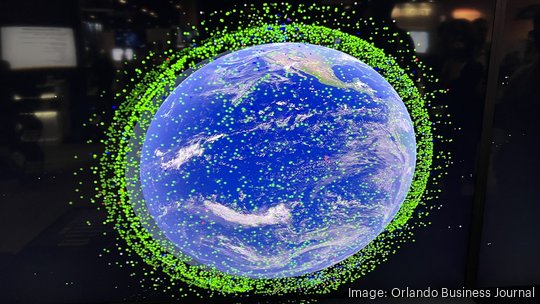
Classified satellites — which are predominantly military — are not included in the count. The vast majority of counted satellites are communications satellites. The most recent count is 8,881. The lion’s share of those belong to the SpaceX Starlink program, which has 5,500 satellites in orbit and is responsible for more launches than any other telecommunications company.
Sign up here for The Beat, Orlando Inno’s free newsletter. And be sure to follow us on LinkedIn, Facebook and X.

